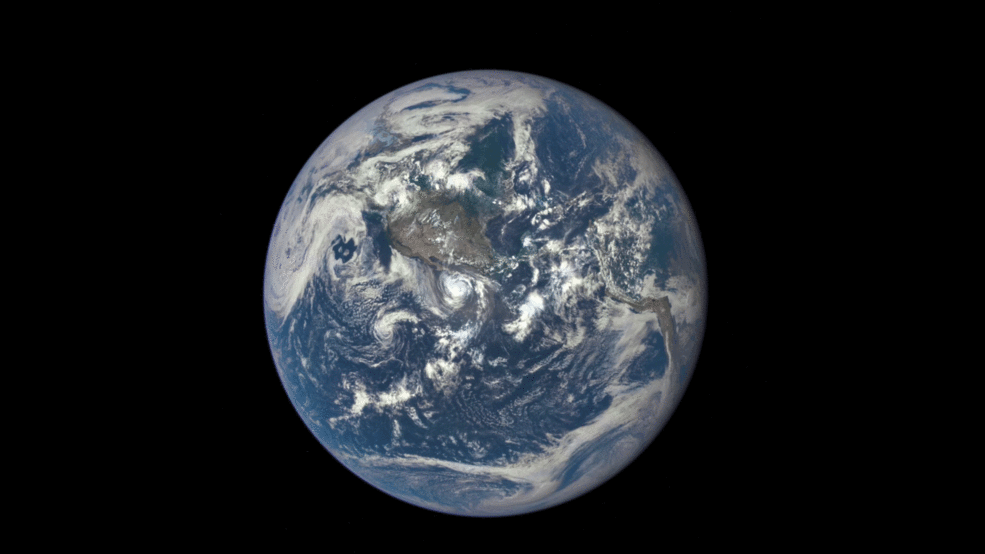Watching This EPIC GIF Of The Moon Cross The Face Of The Earth Is Absolutely Mesmerising
It shows the far side of the Moon passing by Earth, as seen from a million miles away.
Earlier in August, NASA gave the world a small cosmic gift to marvel at — a GIF of the far side of the Moon passing in front of the Earth:
The images in the GIF are composites of separate single-colour images taken in red, green, and blue. The animation features actual satellite images of the far side of the Moon, illuminated by the Sun, as it crosses between the DSCOVR spacecraft's Earth Polychromatic Imaging Camera (EPIC) and telescope, and the Earth - one million miles away. However, in case it doesn't look quite real, here's why:
Unlike the side visible from Earth, the far side doesn’t have the same large, dark swaths of basalt (a type of igneous rock) that make the moon look so patchy from Earth. The view of the Moon we're more familiar with has the famous "Man in the Moon" and Tycho Crater, two easily distinguishable features.
The far side of the Moon, on the other hand, is almost completely foreign to us.
Its most notable features are a patch of basalt called the Sea of Moscow visible in the top left of this image, and the Tsiolkovskiy crater in the lower left. Furthermore, seeing both the Earth and the Moon together in the same shot like this reveals just how much Earth's atmosphere affects light being reflected and emitted from the planet.
The "pure" sunlight being reflected directly off the surface of the nearly-airless Moon and the "diffused" light coming off the Earth almost makes it look like the two were shot under different lighting.
One of the DSCOVR scientists, Adam Szabo, noted that the moon looks relatively dim against the Earth. "Our planet is a truly brilliant object in dark space compared to the lunar surface," he says.
The shine of a full moon hanging in the night sky is, after all, a reflection of that brilliance.
The whole sequence was taken by the Earth Polychromatic Imaging Camera (or "EPIC," a wonderfully appropriate acronym) on the DSCOVR satellite that was launched in February 2015. While DSCOVR was launched to monitor Earth’s atmosphere and vegetation, it does a good job at returning notable and breathtaking photos.
DSCOVR is located one million miles from Earth. The far side of the Moon, where Earthrise was taken from, is roughly 240,000 miles away.
(h/t: The Weather Network, The Verge, NatGeo, and Smithsonian.)
If you're still skeptical about its authenticity, The Verge has done a good job of debunking the conspiracy theories around the GIF
